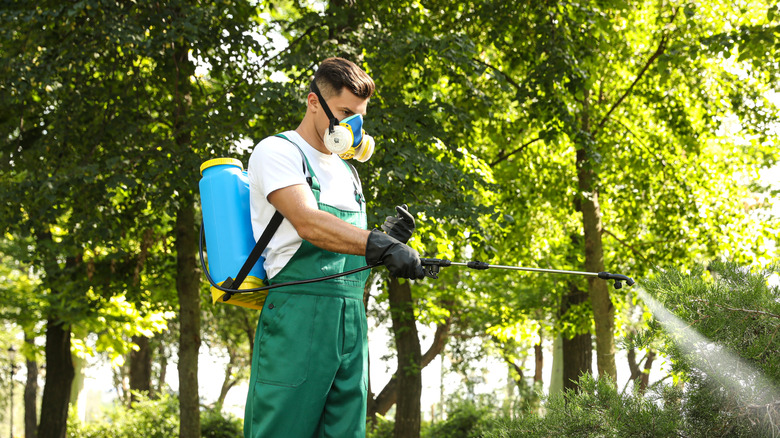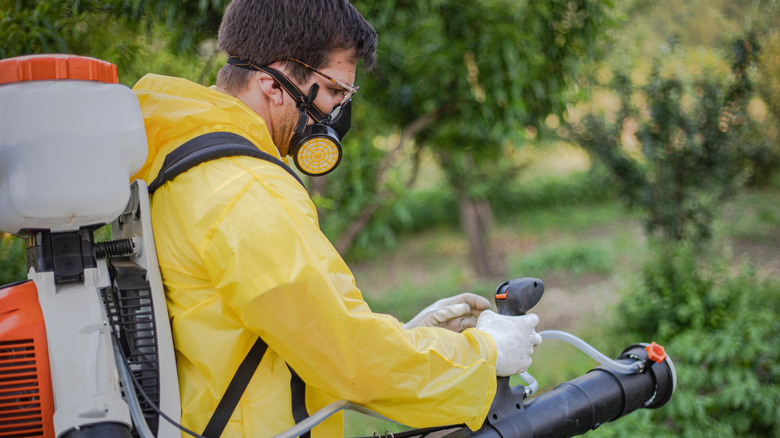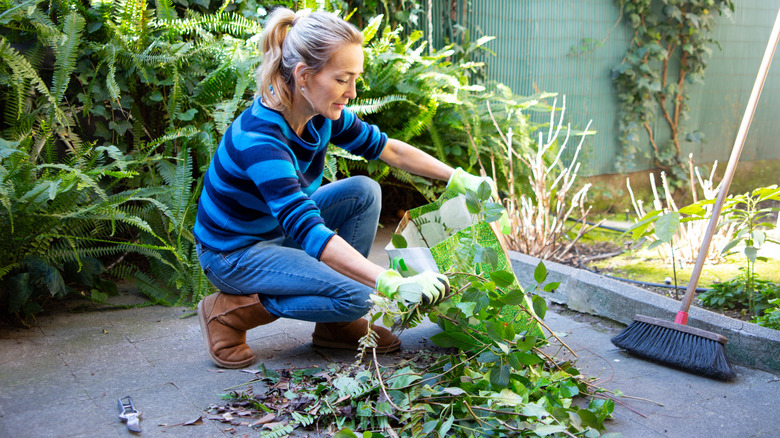How Often You Should Be Treating Your Yard To Prevent Fleas And Ticks
Parasitic fleas and ticks take every opportunity to prey on you and your pets. The vicious little predators can be present in yards of every size and configuration. While you garden, socialize, and play games with your kids, you're vulnerable to a bite that can transmit a host of serious diseases. Flea-borne illnesses include tapeworms, cat scratch disease, murine typhus, and plague. Human tick-borne diseases include Colorado tick fever, Lyme disease, Rocky Mountain spotted fever, and tularemia. Professional pest control treatments should help banish fleas and ticks from your property, but selecting the right treatment frequency and matching the schedule to your region's flea and tick season are keys to success.
As a baseline, each professional flea and tick treatment is effective for about four to six weeks. By spraying again before the previous application loses its viability, you'll maintain consistent coverage throughout your area's flea and tick season. Remember that unseasonably warm weather may mean starting pesticide applications early and/or continuing them later than planned. To keep fleas and ticks at bay, engage a pest control expert familiar with your region's flea and tick habitats and seasonal dynamics.
Flea and tick battle tactics
Conquering any challenge begins with a thorough understanding of the problem. With over 300 types of fleas in the U.S. and at least 90 tick species, getting the horrible little creatures off your property should be high on your list. Before pulling out the spray, your pest control expert should walk through your property, identifying areas likely to harbor these opportunistic predators. The yard's perimeter and border plantings are well-known hot spots.
Equipped with this knowledge, they will spray your property on a schedule that corresponds to the pests' active season. Wide-ranging seasonal temperatures dictate when fleas and ticks pose a threat to people and pets. In warmer states (such as Florida and Hawaii), these parasites remain active throughout the year, so you'll likely need continuous treatment. In cooler regions, warm spring and summer weather brings the onset of flea and tick season. When the thermometer plummets below 45 degrees Fahrenheit, the nasty little pests pose less of a risk.
Two DIY flea treatments may be an option if you prefer a natural solution: beneficial nematodes and diatomaceous earth (DE). Apply beneficial nematodes once a year in early spring and again in the fall for high-risk areas. In addition to fleas, DE is a simple remedy to wipe out ticks naturally. Use it in dry weather once a week for a month, then every three to four months during the active season for maintenance. When applying DE, wear a long-sleeved shirt, a good-quality mask, and sturdy goggles. Prevent your children and pets from visiting the area until the dust completely settles.
Minimize flea and tick magnets
One way to cut back on how often you need to treat for fleas and ticks is to clean up your yard, garden, and other nearby vegetation so fleas and ticks will be less attracted to the area. The overlooked solution for keeping fleas and ticks out of your lawn is to mow (and weed eat) your grass regularly and be ruthless about removing plant debris from the garden. Tall grass and shrubbery are known flea and tick havens, so get this vegetation under control — and keep it there. As an added bonus, rodents and deer will be less inclined to visit a well-maintained property while carrying nasty fleas and ticks that could hop onto you and your pets.
Finally, populate your yard with plants that actively repel ravenous fleas: catnip, chrysanthemums, eucalyptus, lavender, and the appropriately named fleabane daisy. On the tick front, consider plants that keep ticks out of the yard: basil, garlic, lavender, and thyme. Even better, besides the plants' repellent benefits, they each offer a distinctive scent that can help enhance your time in the great outdoors.


